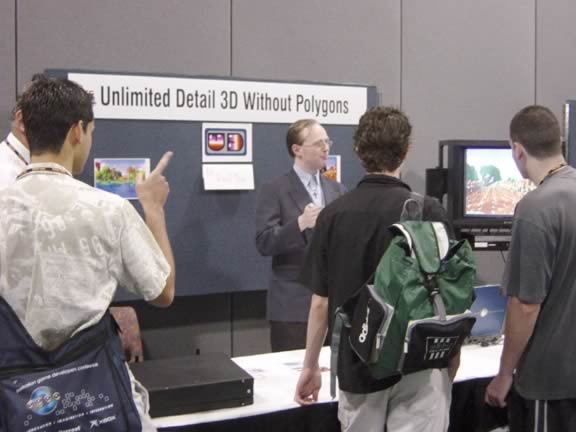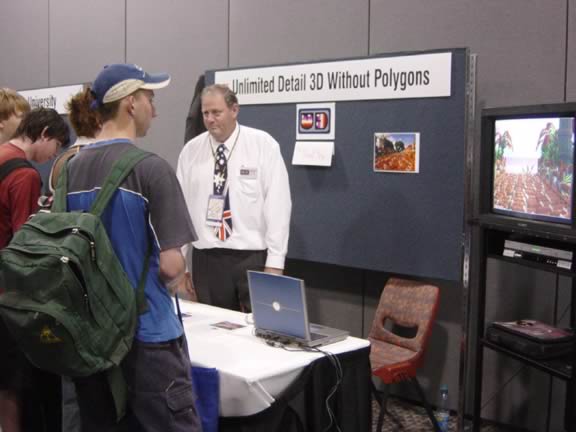The problem you don't understand, is that point clouds don't need TEXTURES. Textures are purely a POLY thing. Point cloud data includes the texture as part of the point cloud, and also includes the COLOR.
You don't NEED terabytes of texture data. However, unlike a poly, which is basically three coords and a bunch of texture data, you instead have 10k point objects.
The key, AGAIN, is that he's not requiring the system to render the ENTIRE point cloud for an object, and then bi-sect, and tri-sect the result to get the 3D projection, he's culling the point cloud based on the pixel projection right from the start. That results, in the only data necessary to render the screen is only the points which are visible within the pixel frame.
A similar process for poly-casting would be to imagine each pixel as an individual 3d projection screen, and ray casting against the poly based upon what's in front of the pixel. Your projection is built into the process.
Carmack mentions these processes as REAR projection as opposed to FRONT projection. Most current poly techniques use a FRONT projection technique which requires a fully rendered item to then be projected from the object to the screen. Euclidon likely (we're speculating here based upon available information), is that he's using a REAR projection technique which limits the rendering to only those points of the point cloud falling into the search algorithms result.
Not saying REAR projection doesn't have it's problems. Shadows, smoke, and other environmental effects become more difficult since they are procedural systems which aren't part of the normal point cloud, and instead, modify the point cloud data. It's not an intractable problem, just one that requires more thought than current poly techniques do.
At the same time, as mentioned in the video, the physics problems become infinitely EASIER since your resolution is high enough to encapsulate some of your physics problems (bounding boxes, perimeters, and other poly techniques for finding edges). So, while making some things harder, it makes other things EASIER.
The biggest hurdle is going to be moving the mindset to a different series of techniques. Most of the graphics professionals in the medical industry are well versed in these systems since they are actually used quite effectively in systems such as your 3-D MRI scanners and LIDAR based rendering. We'll see some crossover here in those techniques are being applied here into the game-world...


